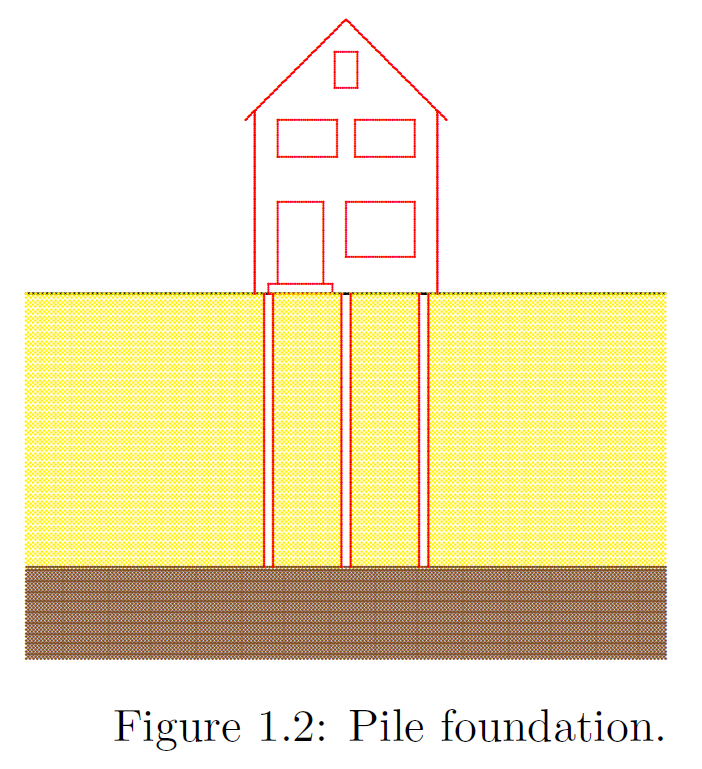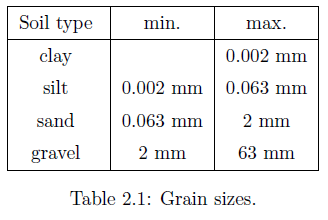In soil mechanics it is often required to determine the total weight of a soil body. This can be calculated if the porosity, the degree of saturation and the densities are known. The weight of the water in a volume V of soil is SnpwgV , and the weight of the particles in that volume is (1−n)PpgV , where g is the strength of the gravity field, or the acceleration of gravity. The value of the gravity constant is about g = 9.8 N/kg, or, approximately, g = 10 N/kg. Thus the total weight W is
![]() This means that the volumetric weight Y , defined as the weight per unit volume, is
This means that the volumetric weight Y , defined as the weight per unit volume, is
This formula indicates that the volumetric weight is determined by a large number of soil parameters: the degree of saturation, the porosity, the densities of water and soil particles, and the gravity constant. In reality it is much simpler to determine the volumetric weight (often also denoted as the unit weight) directly by measuring the weight W of a volume V of soil. It is then not necessary to determine the contribution of each of the components.
If the soil is completely dry the dry volumetric weight is
This value can also be determined directly by weighing a volume of dry soil. In order to dry the soil a sample may be placed in an oven. The temperature in such an oven is usually close to 100 degrees, so that the water will evaporate quickly. At a much higher temperature there would be a risk that organic parts of the soil would be burned.
From the dry volumetric weight the porosity n can be determined, see eq. (3.11), provided that the density of the particle material is known. This is a common method to determine the porosity in a laboratory.
If both the original volumetric weight and the dry volumetric weight Yd are known, by measuring the weight and volumes both in the original state and after drying, the porosity n may be determined from eq. (3.11), and then the degree of saturation S may be determined using eq. (3.10). Unfortunately, this procedure is not very accurate for soils that are almost completely saturated, because a small error in the measurements may cause that one obtains, for example, S = 0.97 rather than the true value S = 0.99. In itself this is rather accurate, but the error in the air volume is then 300 %. In some cases, this may lead to large errors, for instance when the compressibility of the water-air-mixture in the pores must be determined.



